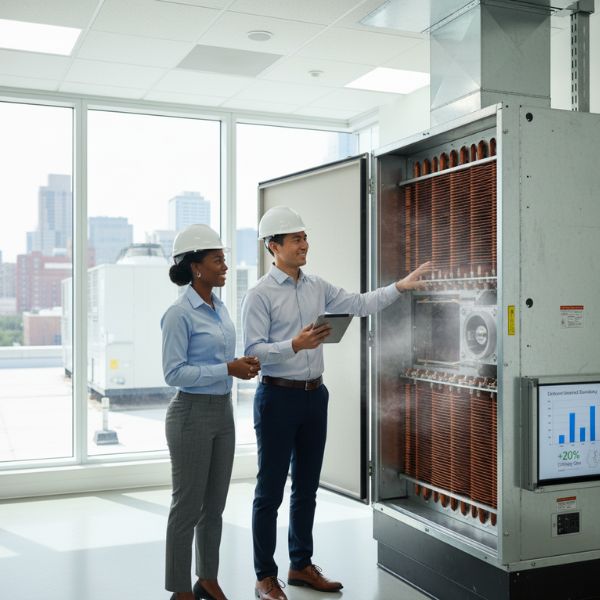In the complex world of HVAC systems, optimal performance of Air Handling Units (AHUs) is paramount for maintaining comfortable and energy-efficient building environments. A critical challenge often faced is temperature stratification in buildings, where distinct layers of hot and cold air can lead to inconsistent temperatures, discomfort, and increased energy consumption. This is where the innovative design of a channel blender from Blender Products, Inc. becomes invaluable. These ingenious devices from Blender Products, Inc. are specifically engineered to address and eliminate hvac stratification, ensuring that the air delivered to your building is uniformly mixed and precisely conditioned. Here are five key features of channel blenders and their profound impact on AHU performance. Contact us today!

Superior Air Mixing to Prevent Stratification
The primary function of a channel blender is to achieve thorough air mixing to prevent stratification. Unlike simple turning vanes, a channel blender utilizes a patented design of airfoils that create high-intensity, counter-rotating vortices. This ensures that hot and cold air streams are rapidly and completely blended before they exit the AHU.

Enhanced Coil Performance and Efficiency
When air enters a heating or cooling coil with significant temperature variations, different parts of the coil operate at varying efficiencies. The cooler sections of a heating coil, or warmer sections of a cooling coil, become less effective. By providing a uniformly mixed air stream, a channel blender ensures that the entire surface area of the coil is utilized optimally.

Precise Temperature and Humidity Control
Accurate temperature and humidity control are essential for both comfort and processes in many commercial and industrial settings. HVAC stratification makes precise control incredibly difficult, as sensors might read an average while significant variations exist within the air stream. A channel blender ensures that the air passing over control sensors is representative of the entire volume, allowing your building management system (BMS) to make more accurate adjustments.

Reduced Fan Energy Consumption
Inefficient air distribution often requires AHU fans to work harder and longer to achieve desired conditions, especially when battling temperature stratification in buildings. By homogenizing the air stream, a channel blender minimizes the need for excessive fan operation to overcome localized temperature discrepancies. The result is a more efficient system that requires less energy to move and condition air, contributing to lower operating costs and a smaller carbon footprint.

Simplified System Design and Commissioning
Integrating a channel blender into your AHU design can simplify the overall system and commissioning process. By proactively addressing air mixing to prevent stratification at the source, engineers can design more compact ductwork runs and potentially reduce the number of sensors or zones required to achieve optimal distribution.
GET STARTED TODAY
The strategic implementation of a channel blender within your AHUs is a game-changer. Investing in a channel blender from Blender Products, Inc. is investing in a healthier, more efficient, and more comfortable building environment. Get started today.
